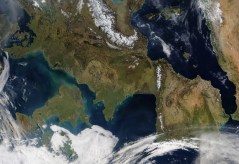The Science Behind Black Hole Formation: A Comprehensive Guide
Black holes are one of the most intriguing and mysterious phenomena in the universe. They have captured the imagination of scientists and the public alike due to their strange properties and the extreme conditions surrounding their formation. This article will delve into how black holes are formed, exploring the science behind these fascinating cosmic entities.
What is a Black Hole?
Before we discuss how black holes form, it’s essential to understand what they are. A black hole is a region in space where gravitational pull is so strong that nothing, not even light, can escape from it. The surface boundary of a black hole is known as the event horizon, which marks the point beyond which nothing can return.
The Life Cycle of Massive Stars
Most black holes form from dying massive stars. In their life cycle, these stars undergo nuclear fusion, converting hydrogen into helium and other heavier elements in their cores. Once a star exhausts its nuclear fuel, it can no longer support itself against gravitational collapse. For stars with masses greater than approximately three times that of our Sun, this collapse results in a supernova explosion.
Supernova Explosion and Core Collapse
During a supernova event, the outer layers of the star are expelled into space while the core collapses under its own gravity. If this remnant core’s mass exceeds about two or three solar masses (the Tolman-Oppenheimer-Volkoff limit), it cannot stabilize itself as a neutron star and will continue to collapse until it forms a singularity at its center—this is when a black hole is born.
Types of Black Holes
There are primarily three types of black holes: stellar black holes formed from collapsing stars; supermassive black holes found at galactic centers containing millions to billions of solar masses; and intermediate black holes whose existence has been theorized but not yet conclusively observed. Each type has distinct formation processes but ultimately leads back to scenarios involving significant amounts of mass collapsing under gravity.
The Role of Accretion Disks and Gravitational Waves
As matter falls into a newly formed black hole from surrounding areas or companion stars, it creates an accretion disk—a swirling disk of gas and dust that heats up due to friction before falling into the event horizon. Additionally, when two black holes merge or collide, they produce ripples in spacetime known as gravitational waves—a phenomenon detected by observatories like LIGO that further enhances our understanding of these enigmatic objects.
In conclusion, understanding how black holes are formed provides insight into fundamental aspects of astrophysics and cosmology. From stellar deaths leading to supernova explosions to complex interactions resulting in accretion disks or mergers between massive bodies—these processes reveal not only how fascinating our universe is but also highlight our ongoing quest for knowledge about its most mysterious components.
This text was generated using a large language model, and select text has been reviewed and moderated for purposes such as readability.






